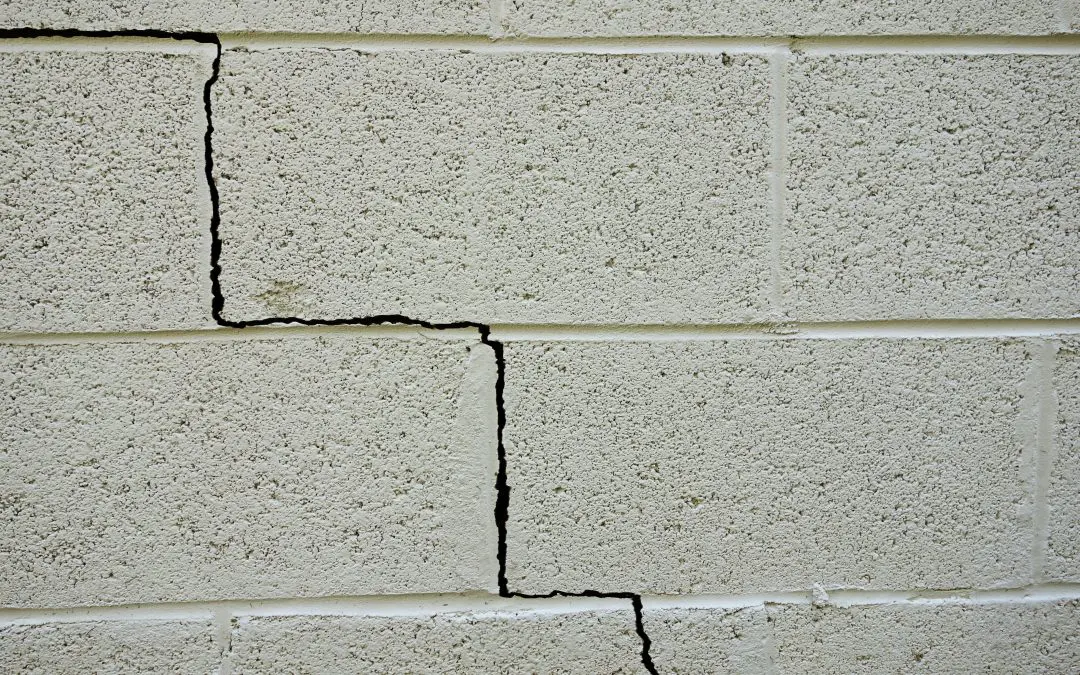Differential Settlement Caused by Variable Soil Types
Cracks should always be evaluated to determine their cause and whether corrective action is required. Look for signs of movement. A clean crack indicates recent movement; a dirty or previously filled crack may be inactive. A pocket lens may be useful for such an examination. Correlate the width of larger cracks to the age of the building. A 1/2-inch crack in a new building may be a sign of rapid settlement, but in a building 50 years old, it may indicate a very slow movement of only 1/100 of an inch (0.25 mm) per year. In each case, the cause and treatment may differ.
Sweeping or Horizontal Cracking of the Foundation Walls
The sweeping or horizontal cracking of brick and concrete block foundation walls may be caused by improper back-filling, vibration (from the movement of heavy equipment and vehicles close to the wall), and by the swelling or freezing and heaving of water-saturated soil adjacent to the wall. Like the shrinkage associated with drying, sweeping or horizontal cracking may have occurred during the original construction and was compensated for at that time. Such distress, however, is potentially serious, as it indicates that the vertical supporting member — the foundation wall — that is carrying a portion of the structure above is bent or broken. It may be possible to push the wall back into place by careful jacking, and then reinforcing it with the addition of interior buttresses, or by pressure-injecting concrete epoxy grout into the wall. If outside ground conditions allow, the wall can be relieved of some lateral pressure by lowering the ground level around the building. When expansive soil is suspected as the cause of the cracking, examine the exterior for sources of water, such as broken leaders or poor surface drainage. Frost-heaving may be the culprit if the damage is above local frost depth, or if it occurred during an especially cold period., Nachi- Foundation Walls and Piers

